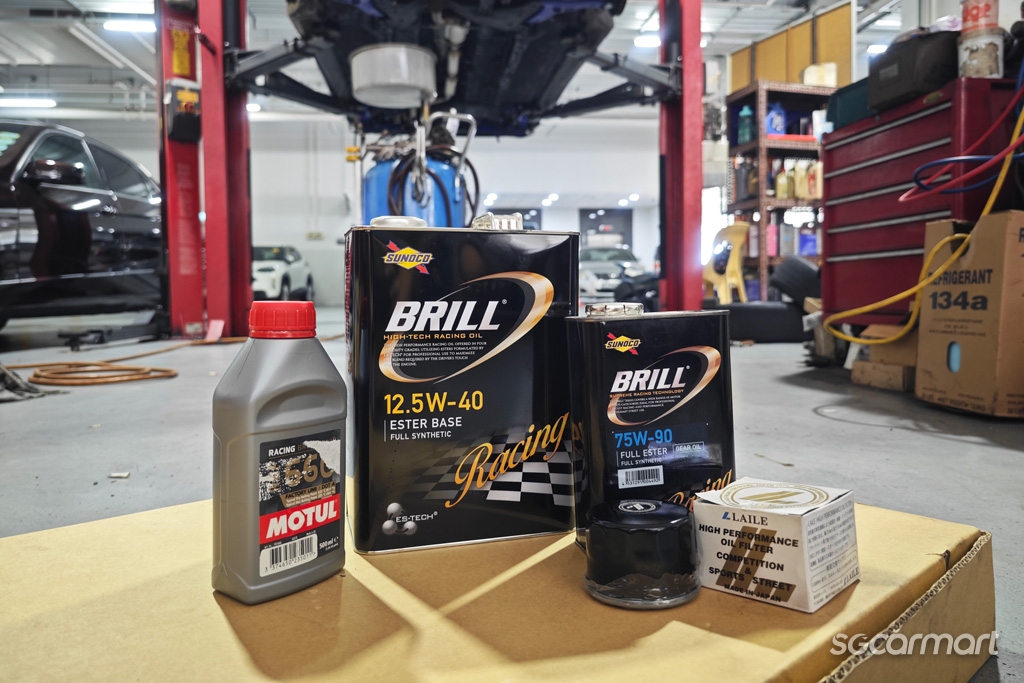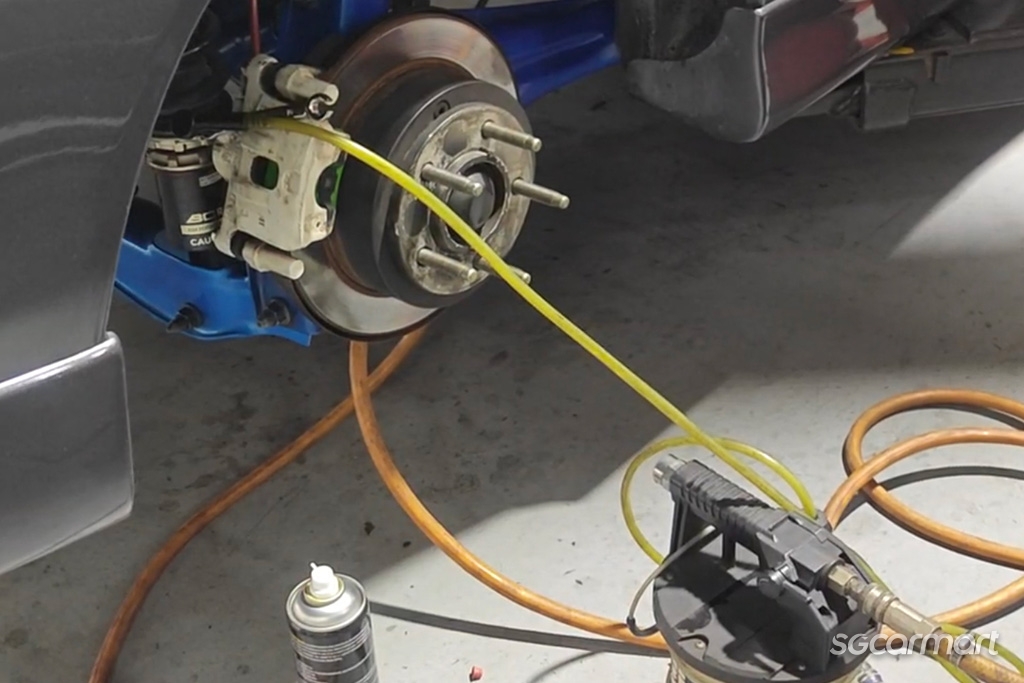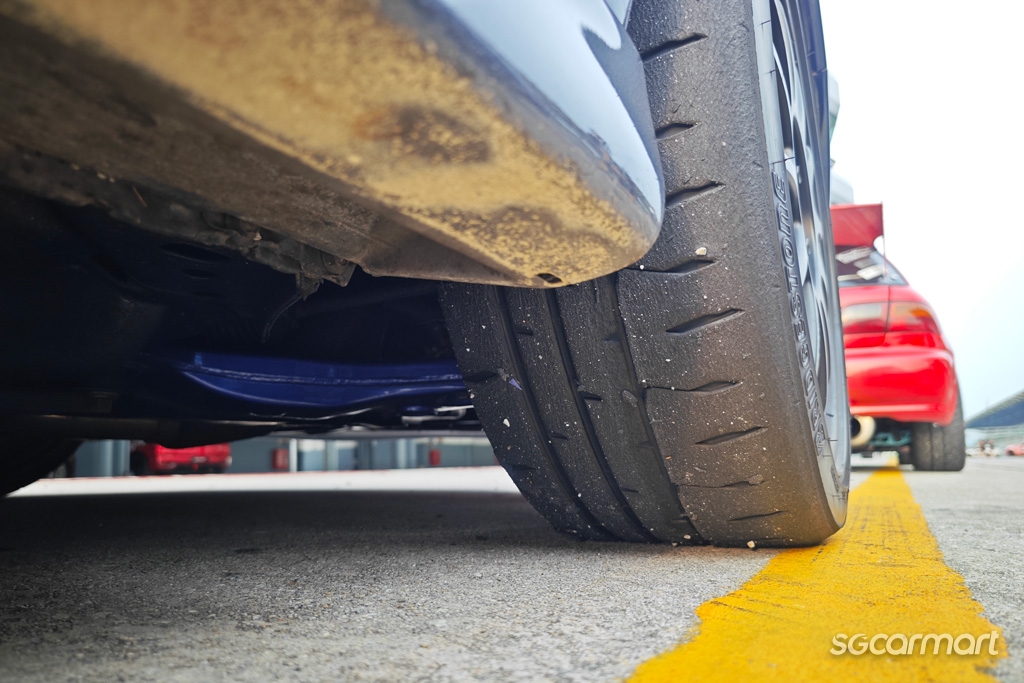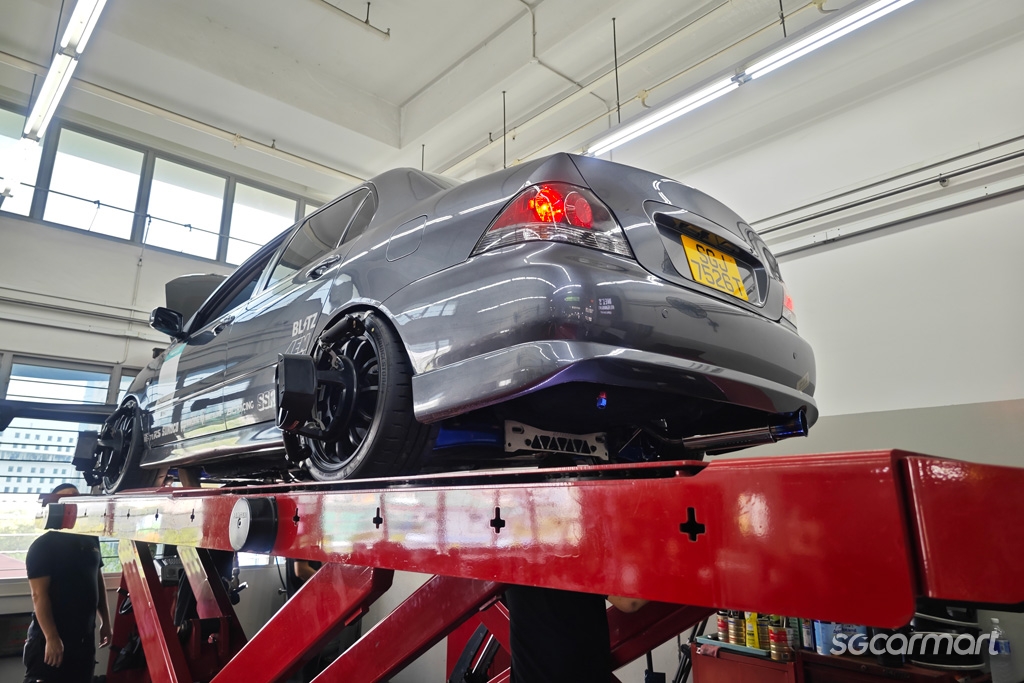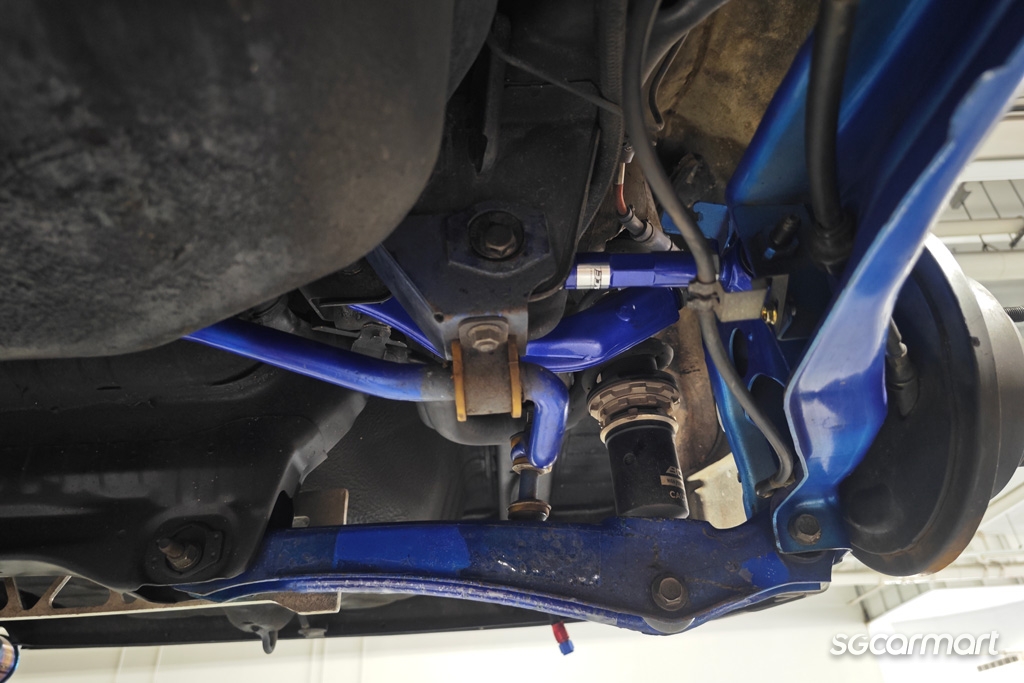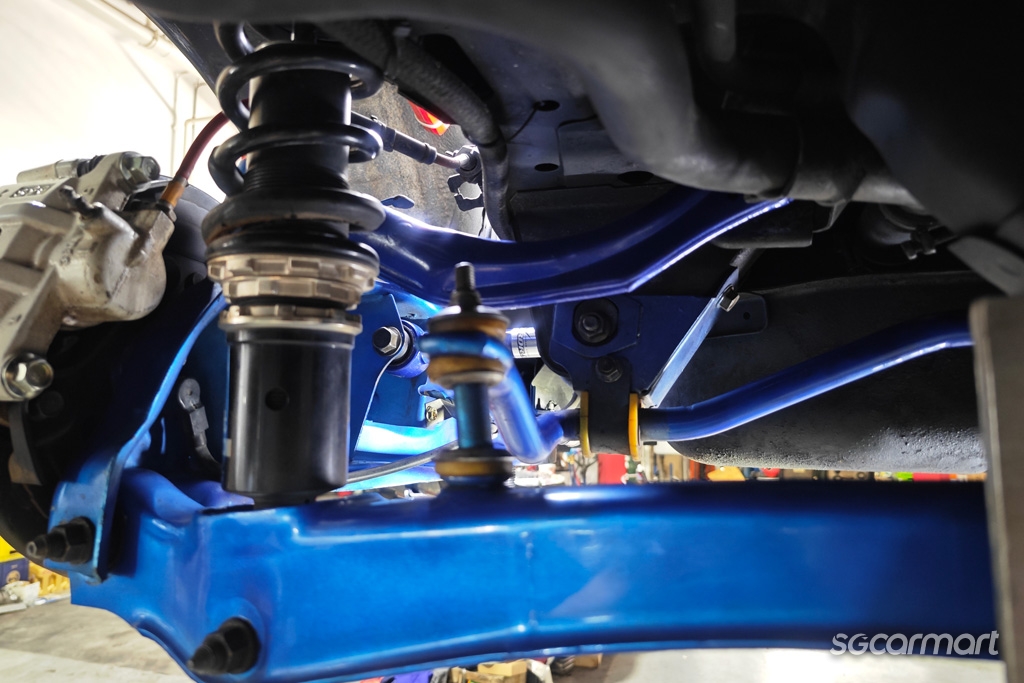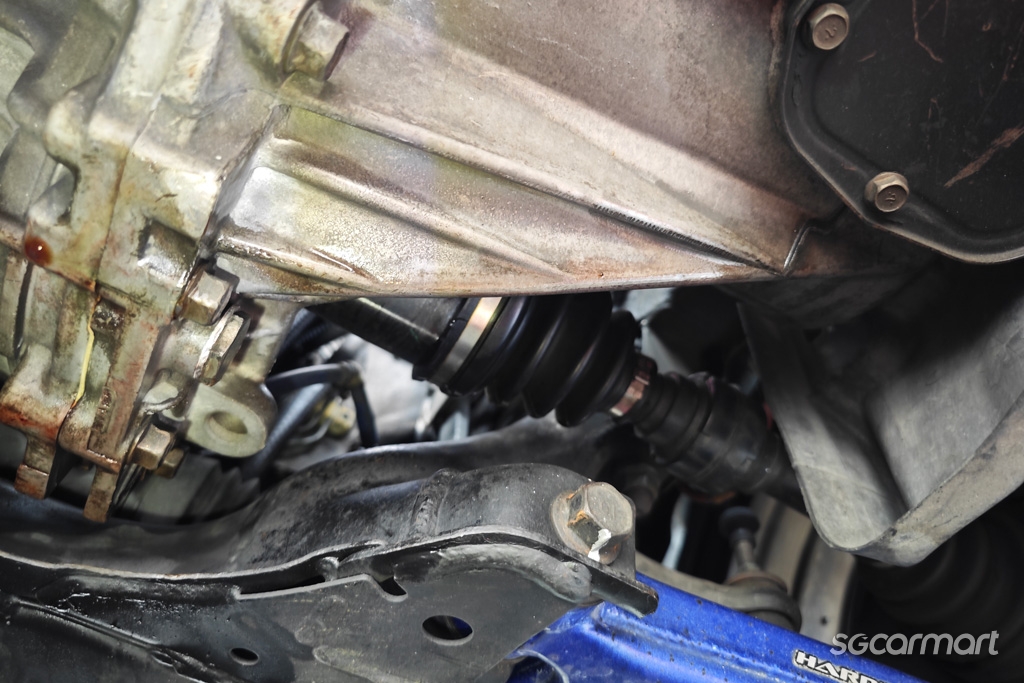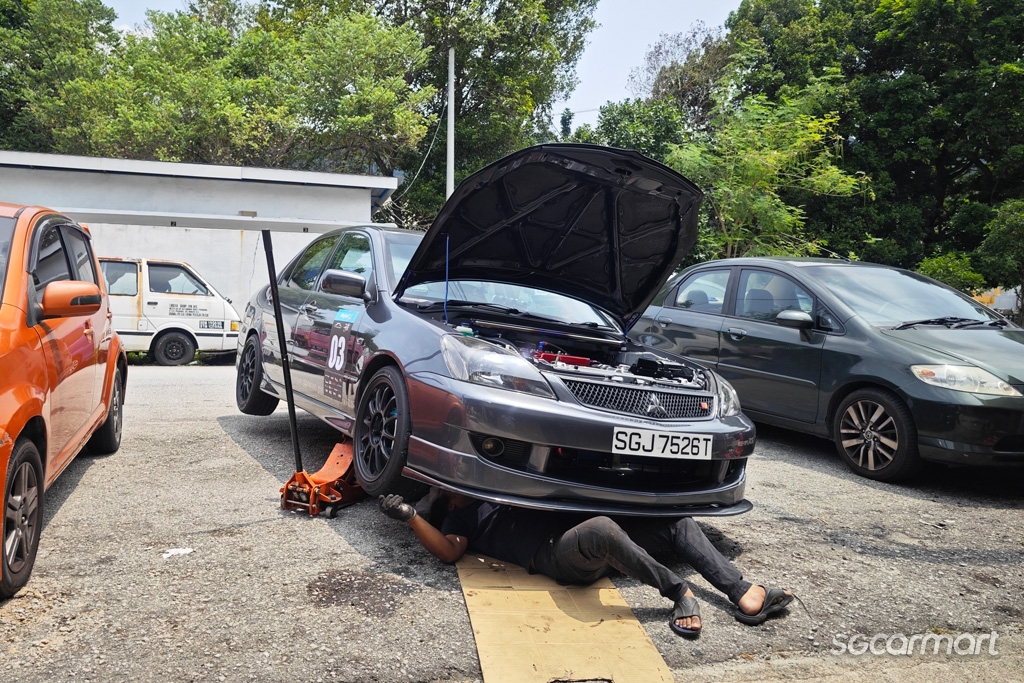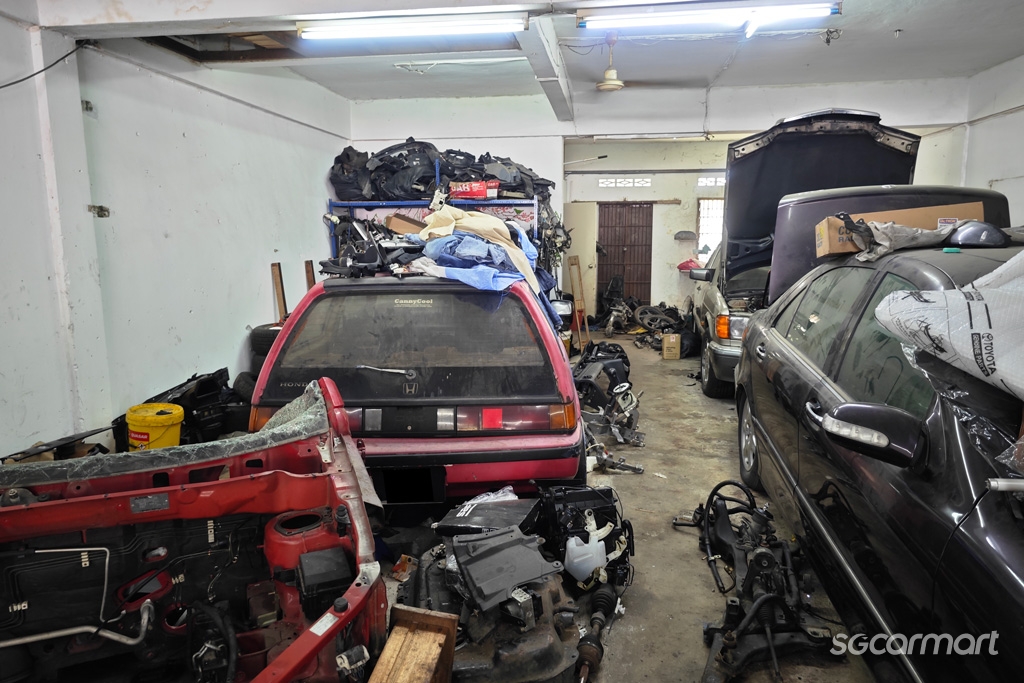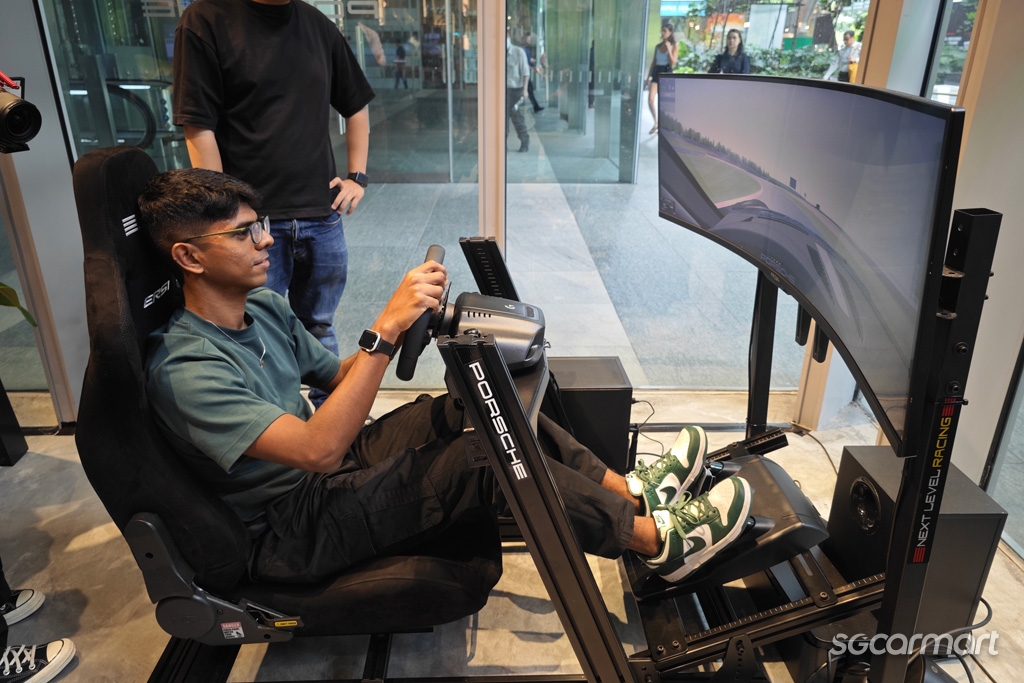First track day? Here are 7 things to prepare for it
27 Oct 2023|3,854 views
The first track day that I attended was almost five years ago, and to be frank, it was rather daunting to take that first step. Other than buying a helmet, which was necessary to get on the track, I didn't know what other preparation work was required before heading to track.
In recent times, track driving has become a popular activity among car enthusiasts here - track day events are organised by car clubs and a myriad of businesses in the industry, and these seem to sell out well before the actual day. It also means that many beginners, like I once was, are taking their first step into the world of track driving.
If you are also among those that have signed up for a track day and are unsure how to prepare, there's no need to worry. Here's a short list of preparations that you should consider doing to ensure a safe and fun track day.
Changing out the contaminated fluid for fresh ones will allow your engine to perform while being well-protected
1. Fluid change for the powertrain
Unless your car was serviced recently, it is advisable to change out the engine, transmission, and differential (if applicable) oils and fluids before your track day.
These fluids perform multiple functions in a car - they lubricate and protect the components, while also keeping everything cool. Dirty, contaminated fluids will not function as well as fresh fluids. And when you are pushing your car to its limits at the race track, you will want the best protection for the components of your car's powertrain to minimise wear.
With fresh fluids, your car will perform at its best and any potential damage to the components can be avoided. This could also be a good time for your mechanic to check for any leaks or issues as well.
2. Service the braking system and check it thoroughly
Brakes are extremely important - while an engine failure can be costly, a brake failure will be catastrophic and can easily cause a severe accident at the track.
There are several components to the brakes of a car and there are some that you'll want to take a closer look at before a track day. Generally, the brake callipers won't cause any trouble if they aren't leaking or seized (there will be signs such as uneven brake pad wear or obvious paint damage from the brake fluid that has leaked out). A visual check and checking on the torque of the bolts that secure it should suffice.
Another major braking component that will require an inspection are the brake rotors. Under normal circumstances, you should only have ensure they aren't overly worn, but if you car sees plenty of harsh or track driving, you should look out for signs of cracks that might cause the rotor to fail.
However, the callipers and rotors aren't the only notable components. You will also want to opt for high-temperature brake fluid and brake pads that are suited for the abuse of track driving. This will prevent brake fade from the harsh driving, allowing safe, predictable, and consistent brake performance on track. If your car is still using its original brake hoses, you should consider switching them out for stainless steel brake hoses as both a preventive maintenance (brake hoses can degrade and fail over extended periods of use), as well as an upgrade for better braking performance.
It doesn't matter what tyre you are using, if they are worn, it's time to change them out before you hit the track!
3. Ensure tyres are in good condition (or even change to fresh ones)
Contrary to popular belief that you absolutely have to use ultra-ultra high performance tyres for track duty, it is perfectly fine to hit the track with normal road tyres.
There are people I know who have gone to track days with budget-oriented and comfort tyres that aren't designed for maximum performance and still had a great time. Instead of fussing over tyre performance (especially if you don't care much about lap times), you should ensure that your tyres are in good condition and with sufficient tread left - you don't want a situation where your tyres delaminate or break apart during intense driving. If budget permits, you could consider changing to a fresh set of tyres for the track day as well.
You should also check on your tyre pressures while making your way to the track, during the track day (you'll want to experiment with the effects of different tyre pressures anyway), and after, to ensure a safe trip.
4. Get a wheel alignment done
Wheel alignment parameters such as the camber and toe are often adjustable for most cars. These will not only affect the ability of a car to go straight, but will also affect its handling performance as well.
Seasoned track drivers will have their preferred alignment settings for optimal performance. But even if you aren't sure of the settings, you'll want to ensure that everything is aligned correctly and within factory specifications (or recommended by the alignment shop) at the very least.
Drastic alignment issues can be a sign of worn undercarriage and suspension components, and it will also cause excessive wear and tear to the tyres - not resolving these issues can make your car dangerous to drive in the track. Hence, while your car's being aligned, you should ask the workshop to give the suspension components a check and ensure that all bolts and nuts are torqued properly to avoid any surprises in the track.
If possible, get your workshop to check over the important areas of your car - such as the suspension, brakes and wheel nuts - to ensure safety
5. Send the car for a detailed check
In a perfect world, you'll want the entire car checked out to avoid any potential issues, but you don't have an F1 team backing you so it isn't possible. Though there are some areas that you should focus on.
Mainly, you'll want to ensure that all vital nuts and bolts are properly torqued and tightened. Bolts that hold down the suspension components, the lugnuts that keep your wheels secured and things such as the engine oil filter should all be checked.
During one of my track days, my car's engine oil filter came off and ejected three litres of engine oil onto the track. While the engine was thankfully unharmed as I realised what happened before it's too late, I was slapped with a RM2,300 bill for the track cleanup. My point is, before you head to the track, try to ensure that everything on your car is in order, to avoid costly incidents.
6. Be prepared for emergencies
No matter how well prepared you are, there's still a chance for things to go awry - like the time my car's oil filter came off. That is why it would be wise to set aside some spare cash and research for shops and contacts that can offer you help if things go wrong during your track day. In fact, this should apply to anyone who's planning to go on a road trip.
My car's starter motor failed without warning during my recent track day, thankfully my Malaysian friend was able to get it sorted and allowed me to continue with the second half of my trip
During my recent track day, my car's starter motor failed without any warning. Thankfully, a Malaysian friend of mine was able to render help by sourcing for a replacement part and recommending his usual workshop to complete the job.
7. Practice on a simulator before going for the real thing
Preparing the car is important, but equally important is to prepare yourself for track driving. Instead of heading into the track without any prior knowledge, driving simulators are a great way to familiarise yourself.
If you don't own a driving simulator set up at home, there are various businesses in Singapore that will allow you to pay to use one. Some of them even have coaching programs that will allow you to improve your driving techniques on the simulator - many of which will be transferrable to actual driving.
I spent quite a fair bit of time driving on Sepang Circuit in Assetto Corsa before I went for an actual track day. While both experiences aren't identical, the accuracy of the driving simulator was good enough to make it a meaningful exercise. When I first drove on the track in my own car, there was a sense of familiarity, and I was able to easily adapt to driving on the track.
Additionally, you should also read up on and familiarise yourself with the rules and etiquette of track driving - you can always approach someone who goes to the track often to learn more about it.
Let's get on the track!
With your car all checked out and with all the prep work done, you should be able to look forward to an enjoyable track day without too much stress. Oh, and always remember that a track day isn't a race event - there's no need to drive too aggressively and endanger other participants. Just enjoy the track experience and stay safe!
Enjoyed reading this article? Here are some others that you might be interested in:
Stop retrofitting LEDs in your old head lights!
5 signs that your wheels are misaligned
Here's what to fix before you renew your car's COE
The first track day that I attended was almost five years ago, and to be frank, it was rather daunting to take that first step. Other than buying a helmet, which was necessary to get on the track, I didn't know what other preparation work was required before heading to track.
In recent times, track driving has become a popular activity among car enthusiasts here - track day events are organised by car clubs and a myriad of businesses in the industry, and these seem to sell out well before the actual day. It also means that many beginners, like I once was, are taking their first step into the world of track driving.
If you are also among those that have signed up for a track day and are unsure how to prepare, there's no need to worry. Here's a short list of preparations that you should consider doing to ensure a safe and fun track day.
Changing out the contaminated fluid for fresh ones will allow your engine to perform while being well-protected
1. Fluid change for the powertrain
Unless your car was serviced recently, it is advisable to change out the engine, transmission, and differential (if applicable) oils and fluids before your track day.
These fluids perform multiple functions in a car - they lubricate and protect the components, while also keeping everything cool. Dirty, contaminated fluids will not function as well as fresh fluids. And when you are pushing your car to its limits at the race track, you will want the best protection for the components of your car's powertrain to minimise wear.
With fresh fluids, your car will perform at its best and any potential damage to the components can be avoided. This could also be a good time for your mechanic to check for any leaks or issues as well.
2. Service the braking system and check it thoroughly
Brakes are extremely important - while an engine failure can be costly, a brake failure will be catastrophic and can easily cause a severe accident at the track.
There are several components to the brakes of a car and there are some that you'll want to take a closer look at before a track day. Generally, the brake callipers won't cause any trouble if they aren't leaking or seized (there will be signs such as uneven brake pad wear or obvious paint damage from the brake fluid that has leaked out). A visual check and checking on the torque of the bolts that secure it should suffice.
Another major braking component that will require an inspection are the brake rotors. Under normal circumstances, you should only have ensure they aren't overly worn, but if you car sees plenty of harsh or track driving, you should look out for signs of cracks that might cause the rotor to fail.
However, the callipers and rotors aren't the only notable components. You will also want to opt for high-temperature brake fluid and brake pads that are suited for the abuse of track driving. This will prevent brake fade from the harsh driving, allowing safe, predictable, and consistent brake performance on track. If your car is still using its original brake hoses, you should consider switching them out for stainless steel brake hoses as both a preventive maintenance (brake hoses can degrade and fail over extended periods of use), as well as an upgrade for better braking performance.
It doesn't matter what tyre you are using, if they are worn, it's time to change them out before you hit the track!
3. Ensure tyres are in good condition (or even change to fresh ones)
Contrary to popular belief that you absolutely have to use ultra-ultra high performance tyres for track duty, it is perfectly fine to hit the track with normal road tyres.
There are people I know who have gone to track days with budget-oriented and comfort tyres that aren't designed for maximum performance and still had a great time. Instead of fussing over tyre performance (especially if you don't care much about lap times), you should ensure that your tyres are in good condition and with sufficient tread left - you don't want a situation where your tyres delaminate or break apart during intense driving. If budget permits, you could consider changing to a fresh set of tyres for the track day as well.
You should also check on your tyre pressures while making your way to the track, during the track day (you'll want to experiment with the effects of different tyre pressures anyway), and after, to ensure a safe trip.
4. Get a wheel alignment done
Wheel alignment parameters such as the camber and toe are often adjustable for most cars. These will not only affect the ability of a car to go straight, but will also affect its handling performance as well.
Seasoned track drivers will have their preferred alignment settings for optimal performance. But even if you aren't sure of the settings, you'll want to ensure that everything is aligned correctly and within factory specifications (or recommended by the alignment shop) at the very least.
Drastic alignment issues can be a sign of worn undercarriage and suspension components, and it will also cause excessive wear and tear to the tyres - not resolving these issues can make your car dangerous to drive in the track. Hence, while your car's being aligned, you should ask the workshop to give the suspension components a check and ensure that all bolts and nuts are torqued properly to avoid any surprises in the track.
If possible, get your workshop to check over the important areas of your car - such as the suspension, brakes and wheel nuts - to ensure safety
5. Send the car for a detailed check
In a perfect world, you'll want the entire car checked out to avoid any potential issues, but you don't have an F1 team backing you so it isn't possible. Though there are some areas that you should focus on.
Mainly, you'll want to ensure that all vital nuts and bolts are properly torqued and tightened. Bolts that hold down the suspension components, the lugnuts that keep your wheels secured and things such as the engine oil filter should all be checked.
During one of my track days, my car's engine oil filter came off and ejected three litres of engine oil onto the track. While the engine was thankfully unharmed as I realised what happened before it's too late, I was slapped with a RM2,300 bill for the track cleanup. My point is, before you head to the track, try to ensure that everything on your car is in order, to avoid costly incidents.
6. Be prepared for emergencies
No matter how well prepared you are, there's still a chance for things to go awry - like the time my car's oil filter came off. That is why it would be wise to set aside some spare cash and research for shops and contacts that can offer you help if things go wrong during your track day. In fact, this should apply to anyone who's planning to go on a road trip.
My car's starter motor failed without warning during my recent track day, thankfully my Malaysian friend was able to get it sorted and allowed me to continue with the second half of my trip
During my recent track day, my car's starter motor failed without any warning. Thankfully, a Malaysian friend of mine was able to render help by sourcing for a replacement part and recommending his usual workshop to complete the job.
7. Practice on a simulator before going for the real thing
Preparing the car is important, but equally important is to prepare yourself for track driving. Instead of heading into the track without any prior knowledge, driving simulators are a great way to familiarise yourself.
If you don't own a driving simulator set up at home, there are various businesses in Singapore that will allow you to pay to use one. Some of them even have coaching programs that will allow you to improve your driving techniques on the simulator - many of which will be transferrable to actual driving.
I spent quite a fair bit of time driving on Sepang Circuit in Assetto Corsa before I went for an actual track day. While both experiences aren't identical, the accuracy of the driving simulator was good enough to make it a meaningful exercise. When I first drove on the track in my own car, there was a sense of familiarity, and I was able to easily adapt to driving on the track.
Additionally, you should also read up on and familiarise yourself with the rules and etiquette of track driving - you can always approach someone who goes to the track often to learn more about it.
Let's get on the track!
With your car all checked out and with all the prep work done, you should be able to look forward to an enjoyable track day without too much stress. Oh, and always remember that a track day isn't a race event - there's no need to drive too aggressively and endanger other participants. Just enjoy the track experience and stay safe!
Enjoyed reading this article? Here are some others that you might be interested in:
Stop retrofitting LEDs in your old head lights!
5 signs that your wheels are misaligned
Here's what to fix before you renew your car's COE



















